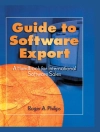LINQ is the part of the .NET Framework that provides a generic approach to querying data from different data sources. It has quickly become the next must-have skill for .NET developers. Pro LINQ: Language Integrated Query in C# 2010 is all about code. Literally, this book starts with code and ends with code. Most books show the simplest examples of how to use a method, but they so rarely show how to use the more complex prototypes. This book is different. Demonstrating the overwhelming majority of LINQ operators and prototypes, it is a veritable treasury of LINQ examples.
Rather than obscure the relevant LINQ principles in code examples by focusing on a demonstration application you have no interest in writing, this book cuts right to the chase of each LINQ operator, method, or class. However, where complexity is necessary to truly demonstrate an issue, the examples are right there in the thick of it. For example, code samples demonstrating how to handle concurrency conflicts actually create concurrency conflicts so you can step through the code and see them unfold.
Face it, most technical books, while informative, are dull. LINQ need not be dull. Written with a sense of humor, this book will attempt to entertain you on your journey through the wonderland of LINQ and C# 2010.
Tabela de Conteúdo
Pro LINQ: Language Integrated Query in C# 2010.- Hello LINQ.- C# Language Enhancements for LINQ.- LINQ to Objects.- LINQ to Objects Introduction.- Deferred Operators.- Nondeferred Operators.- LINQ to XML.- LINQ to XML Introduction.- The LINQ to XML API.- LINQ to XML Operators.- Additional XML Capabilities.- LINQ to Data Set.- LINQ to Data Set Operators.- Additional Data Set Capabilities.- LINQ to SQL.- LINQ to SQL Introduction.- LINQ to SQL Tips and Tools.- LINQ to SQL Database Operations.- LINQ to SQL Entity Classes.- The LINQ to SQL Data Context.- LINQ to SQL Concurrency Conflicts.- Additional LINQ to SQL Capabilities.- LINQ to Entities.- LINQ to Entities Introduction.- LINQ to Entities Operations.- LINQ to Entities Classes.- parallel LINQ.- Parallel LINQ Introduction.- Using Parallel LINQ.- Parallel LINQ Operators.
Sobre o autor
Joseph C. Rattz, Jr., unknowingly began his career in software development in 1990 when a friend asked him for assistance writing an ANSI text editor named ANSI Master for the Commodore Amiga. A hangman game (the Gallows) soon followed. From these compiled BASIC programs, he moved on to programming in C for more speed and power. Joe then developed applications that were sold to Jump Disk, an Amiga disk magazine, as well as Amiga World magazine. Due to developing in a small town on a fairly isolated platform, Joe learned all the wrong ways to write code. It was while trying to upgrade his poorly written applications that he gained respect for the importance of easily maintainable code. It was love at first sight when Joe spotted a source-level debugger in use for the first time. Two years later, Joe obtained his first software development opportunity at Policy Management Systems Corporation as an entry level programmer developing a client/server insurance application for OS/2 and Presentation Manager. Through the years, he added C++, Unix, Java, ASP, ASP.NET, C#, HTML, DHTML, and XML to his skill set, while developing applications for SCT, Docu Corp, IBM, and the Atlanta Committee for the Olympic Games, Check Free, NCR, EDS, Delta Technology, Radiant Systems, and the Genuine Parts Company. Joe enjoys the creative aspects of user interface design, and he appreciates the discipline necessary for server-side development. But, given his druthers, his favorite development pastime is debugging code. Joe can be found working for the Genuine Parts Company the parent company of NAPA in the Automotive Parts Group Information Systems department, where he works on his baby, the storefront web site. This site for NAPA provides the stores a view into their accounts and data on a network of AS/400s.












